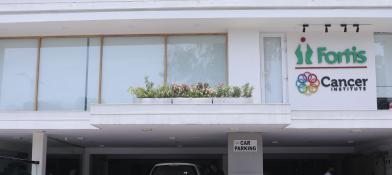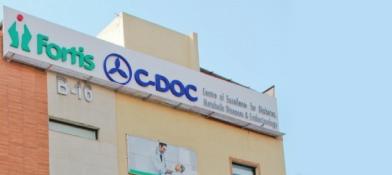Mohs surgery
Overview:
Moh’s surgery is a surgical technique used to treat skin cancer. It is a precise technique that removes affected tissue layer by layer. It saves healthy skin by removing the cancer tissue at the microscopic level. It is also known as Moh’s micrographic surgery.
It is an effective technique employed to treat skin cancers. It is done in stages by removing the cancerous tissue until healthy tissue remains. This technique offers high cure rates as it has reasonable microscopic control of the tumor margins.
Technique of Moh’s surgery:
In this surgery, a thin layer of tissue is taken by cutting it at a specific angle. Tissue is taken from the surrounding and beneath the cancerous site and frozen. This frozen tissue is sliced into thin sections and examined under the microscope for cancer cells. If any cancerous cells exist, further cutting is done and observed under the microscope until there are no cancer cells and only healthy tissue remains.
Indications:
Mohs surgery is indicated for treating skin cancers like basal cell carcinoma, melanoma and squamous cell carcinoma. It is highly suggested that large skin cancers with rapid growth have a high chance of recurrence and are difficult to define. It is particularly indicated in cancers that arise from the central face, including eyelids, eyebrows, nose, lips, chin, ear, and other areas like genital areas, hands, feet, ankles, nails, nipples, and surrounding skin. It is indicated in high-risk patients who are immunocompromised, have genetic syndromes, are exposed to prior radiation, and have a history of high-risk tumors. It is also suggested in tumors with positive margins of cancer cells even after recent removal and aggressive cancers with nerve involvement or high-grade tumors, as observed in the microscope.
Advantages of Moh’s surgery:
Moh’s surgery has the advantage of a complete microscopic examination with complete removal of cancer. The cure rates are high, and it has the advantage of sparing the skin from normal to as much as possible. It is a precise tissue-sparing surgery done in a single outpatient visit. It also has the advantage of a faster recovery rate.
Before the procedure:
Before Moh’s, an individual should give a complete medical and surgical history, present medications being taken, and allergies to any drugs, one may have to stop taking certain medications as advised by healthcare professionals and start using others prescribed by them. Moh's surgery is done in a procedure room with a lab nearby. After evaluating the patient with necessary investigations and deeming them fit for the procedure, markings are made on the surgical site where the surgery has to be performed.
During the procedure:
During Moh’s surgery, the surgical area is anesthetized and cleansed with an antiseptic solution. A sharp surgical knife removes a part of the visible tissue from the marked site. This tissue is removed at an angle or a slope for easy tissue processing. The removed tissue is marked on the skin with colored dyes for mapping. Mapping involves identifying the tissue's right, left, top, and bottom areas.
The removed tissue is flattened and frozen for observation under the microscope. All the edges of the removed tissue are examined under the microscope. If the result indicates the presence of cancer, the previous mapping identifies the precise location, and more tissue is removed from the mapped area. This process is repeated until the margins are clear with healthy tissue and no cancer tissue. After confirming the removal of the entire cancer, the surgical site is closed.
After the procedure:
After removing the entire cancer, an individual can decide on how to close the wound. It can be closed by letting the wound heal or stitched to close the site. It can also be fixed by pulling skin from adjacent areas or skin grafting from other body areas. The duration of the surgery and closure depends on the extent and size of the cancer. Medications will be prescribed to reduce pain and ward off any infections. A bandage covers the wound. Post-operative instructions on wound care include applying cold packs to reduce swelling, dressing the wound two to three times a day, and using a sun protection factor after scar formation begins.
The success of Moh's surgery:
Moh's surgery is highly successful as the results of the removal of the cancer are obtained immediately. Excellent 5-year cure rates are seen after Moh’s surgery for skin cancers like basal and squamous cell carcinoma. For basal cell carcinoma of the skin, the cure rate is 99% for new cases and 94% for recurrent cases. For squamous cell carcinoma, the cure rate is 95-99% for new cases and 90% for recurrent cases.
Recovery after the procedure:
Individuals report more pain in areas where wound size is more significant than 3 square centimeters. Healing occurs in a year or more as the scar matures and fades away.
Risks and complications:
Some risks and complications associated with Moh’s surgery include bleeding, infections, pain around the surgical site, and poor wound healing due to an immunocompromised state. The other complications include permanent numbness of the area when a nerve is damaged, temporary, or permanent weakness of the surgical site due to trauma to the muscle, and large scar tissue formation. Tumor regrowth can also occur with previously operated tumors or longstanding tumors.
Conclusion:
Mohs surgery is considered the gold standard treatment for certain types of skin cancers. It removes cancerous tissue layer by layer, providing high efficacy rates while minimizing damage to healthy tissue. It is an efficient treatment option for skin cancer with less impact on the quality of life.






























